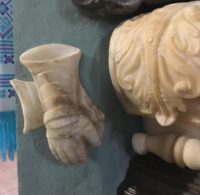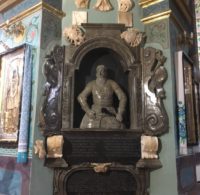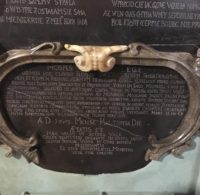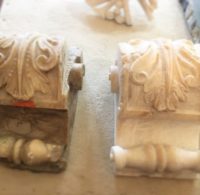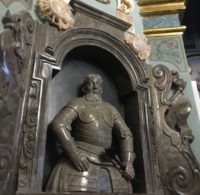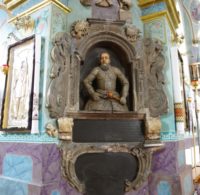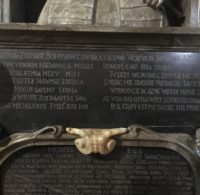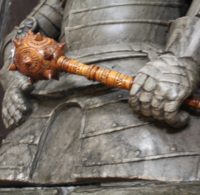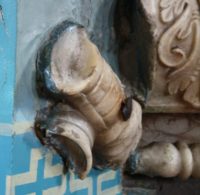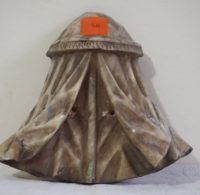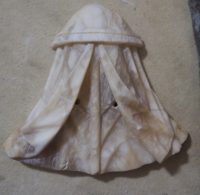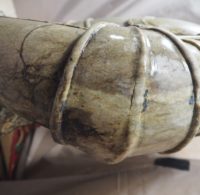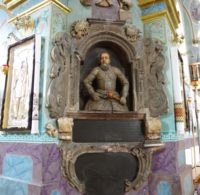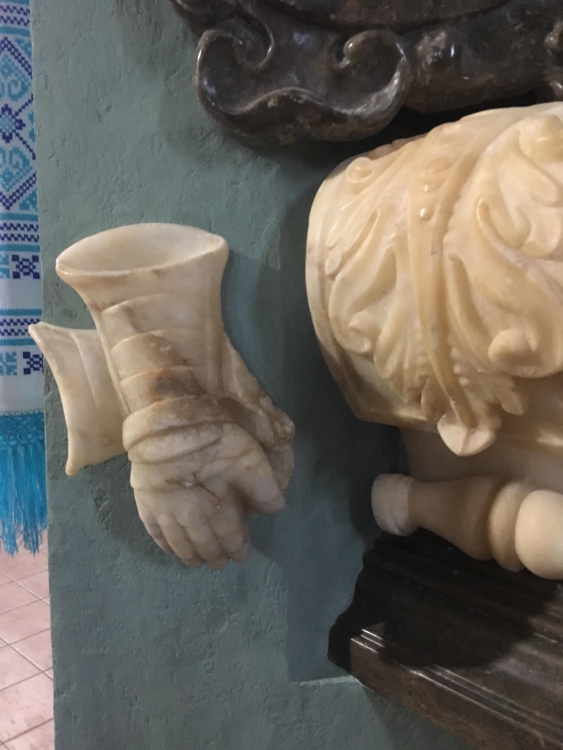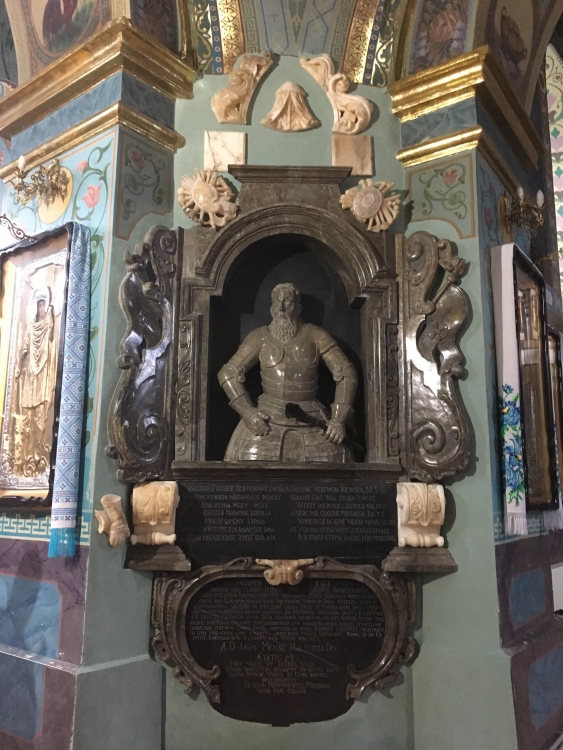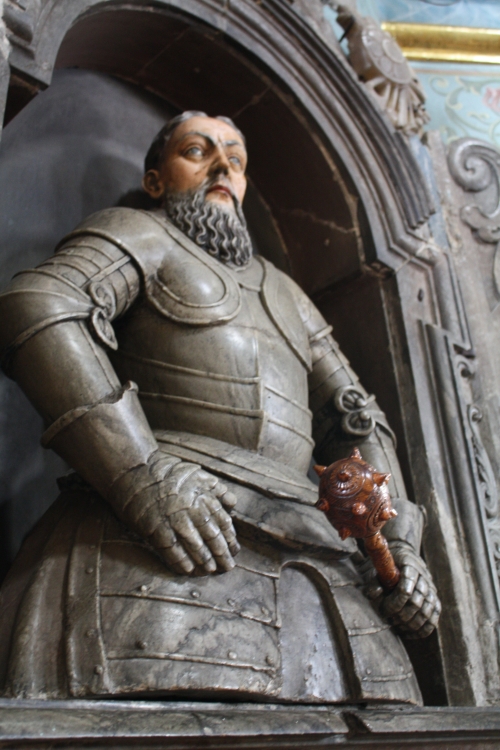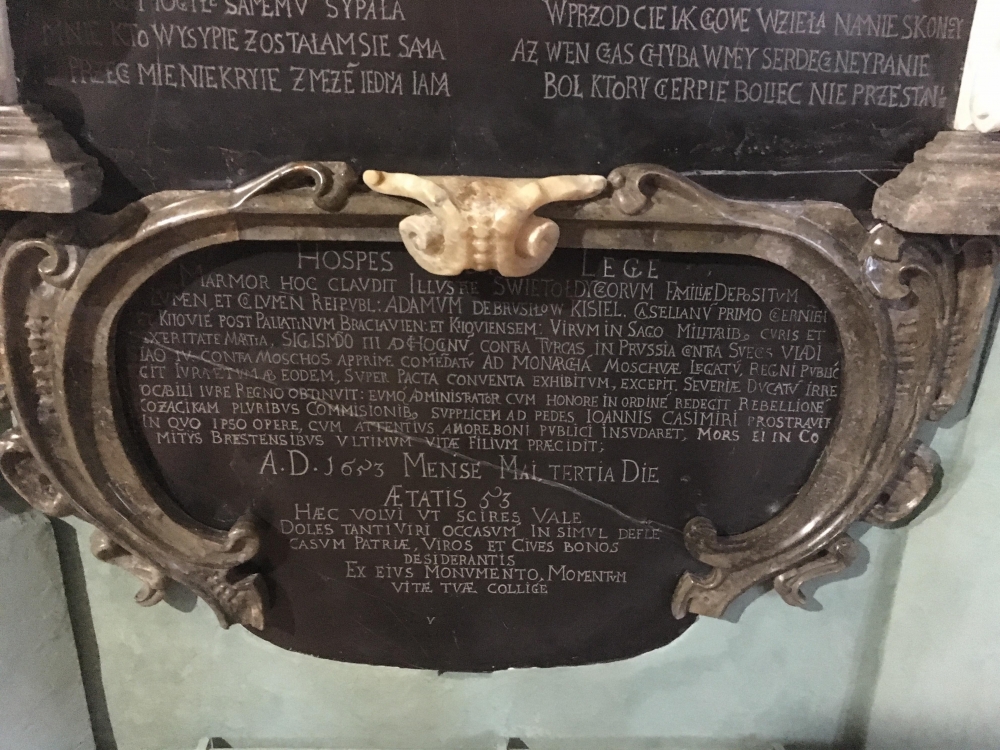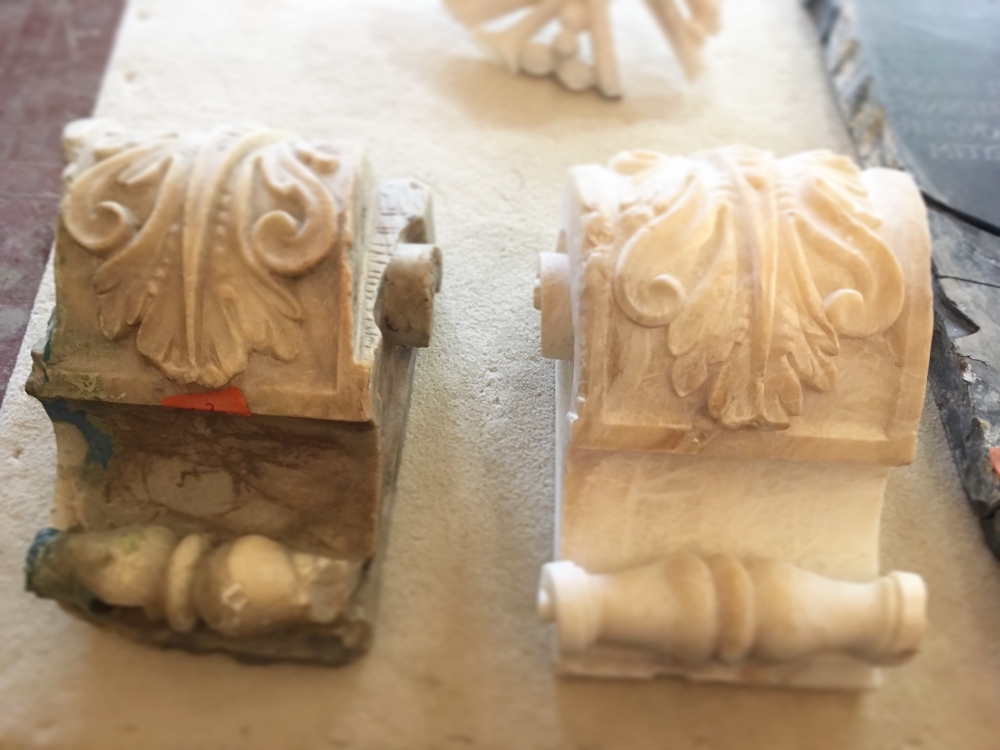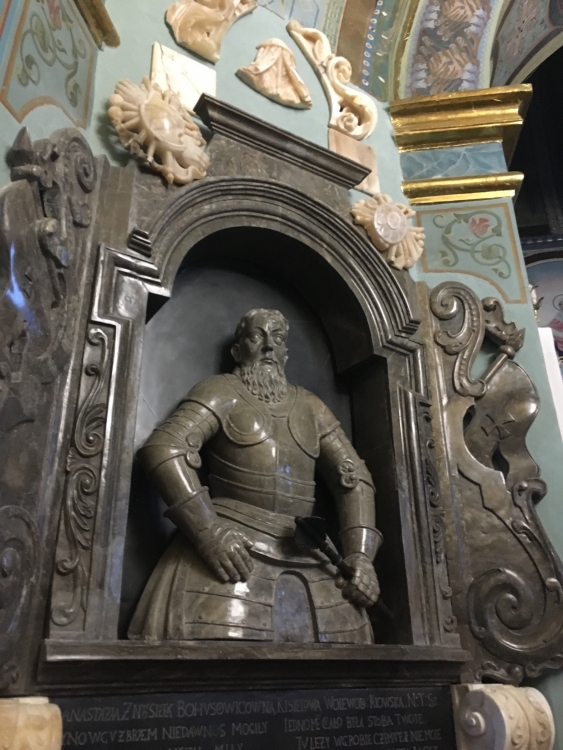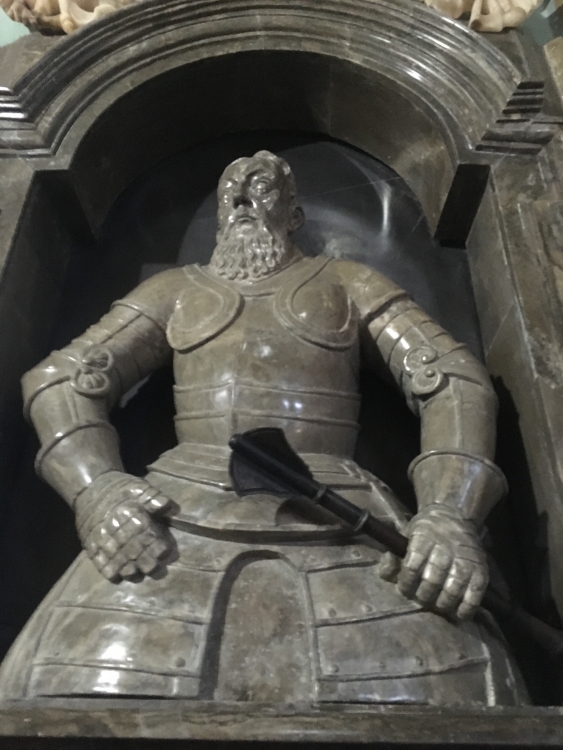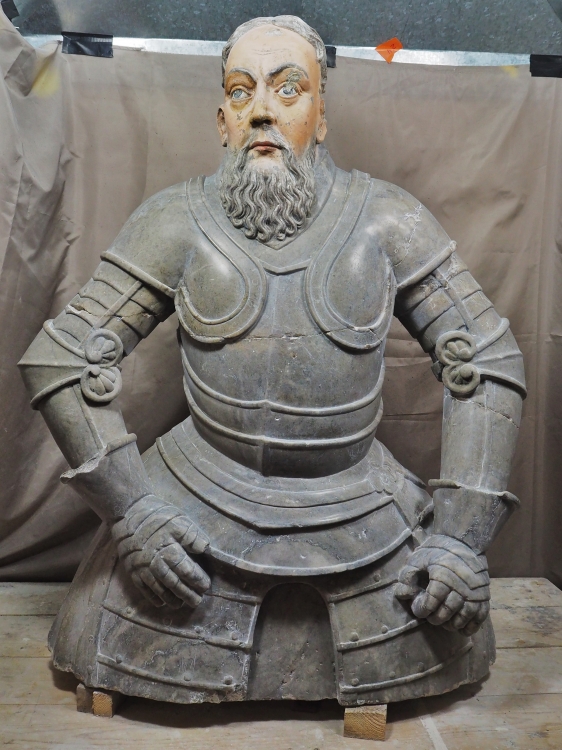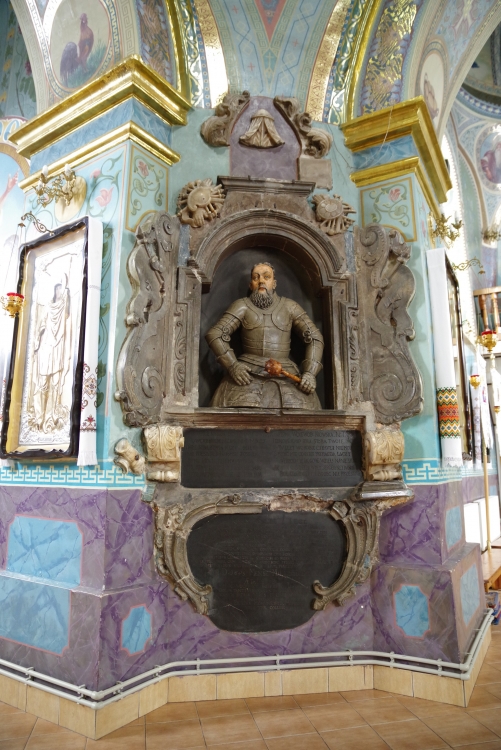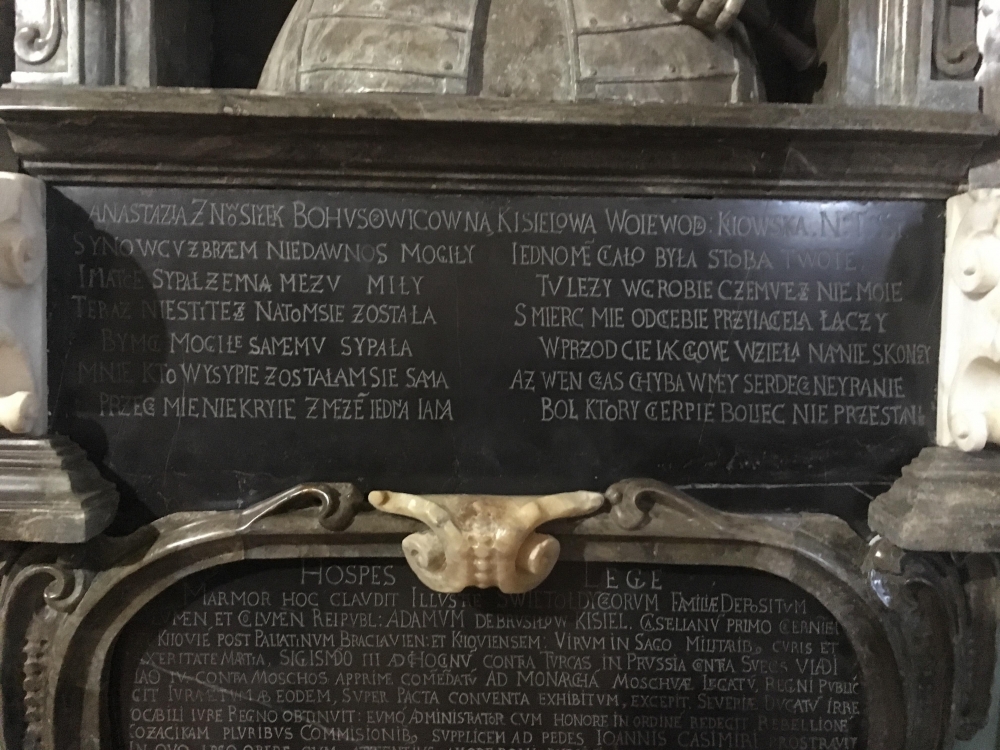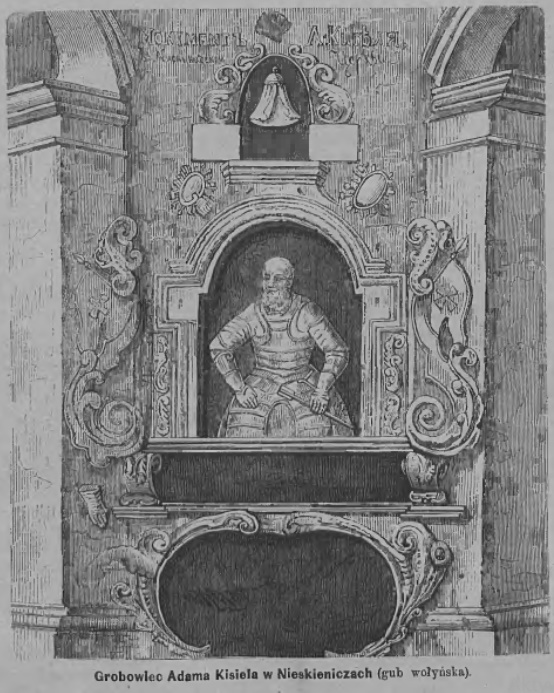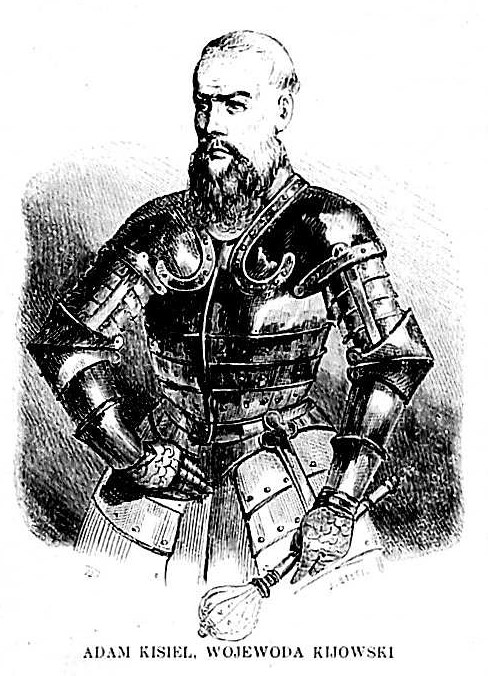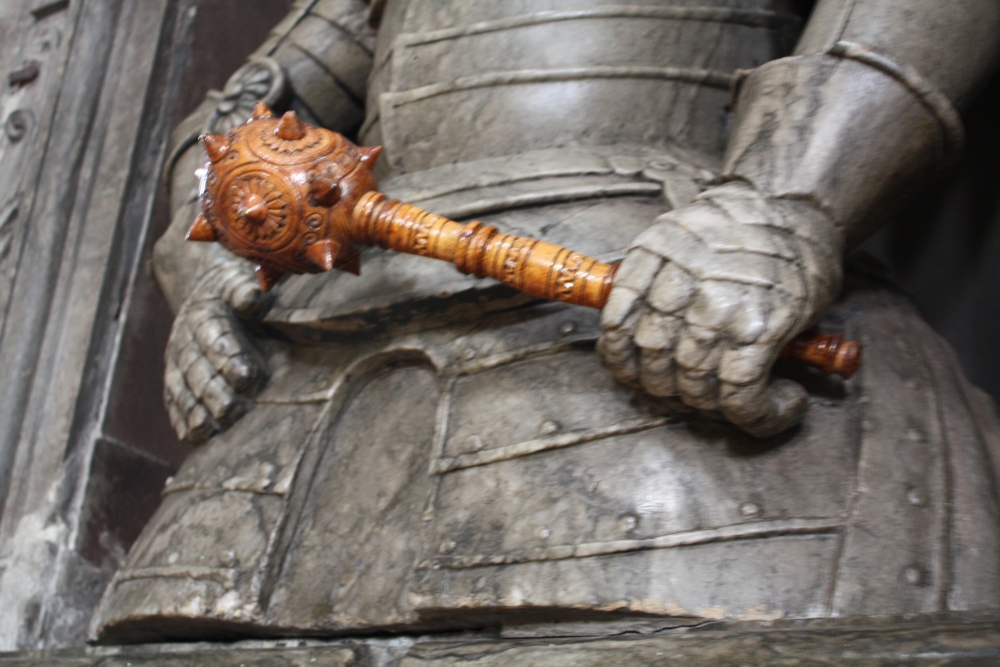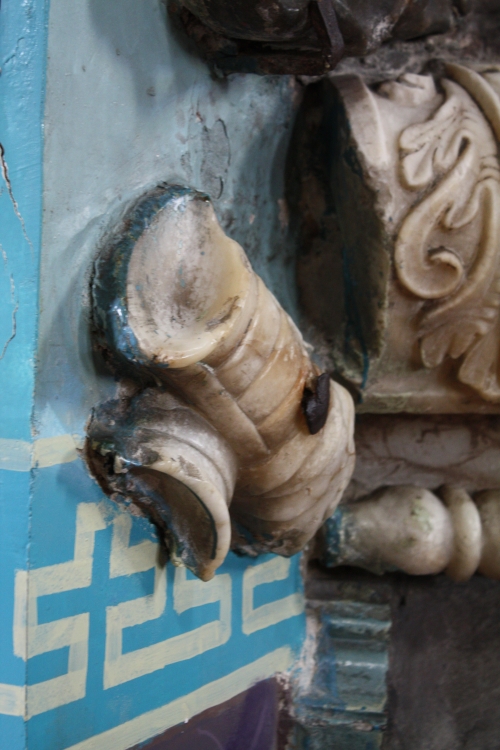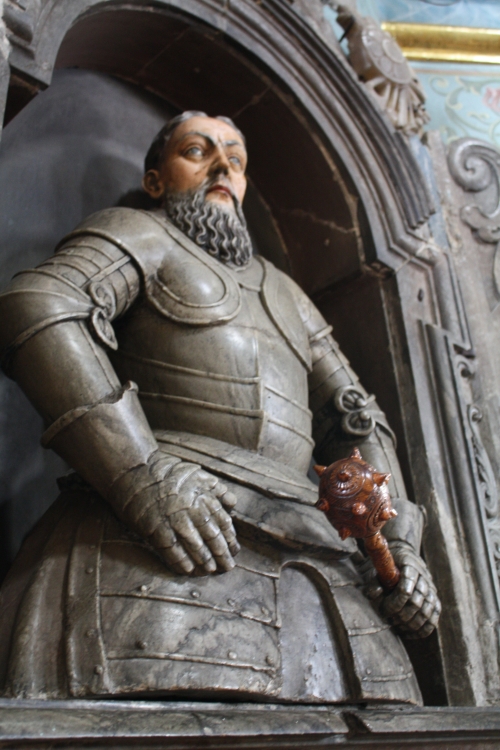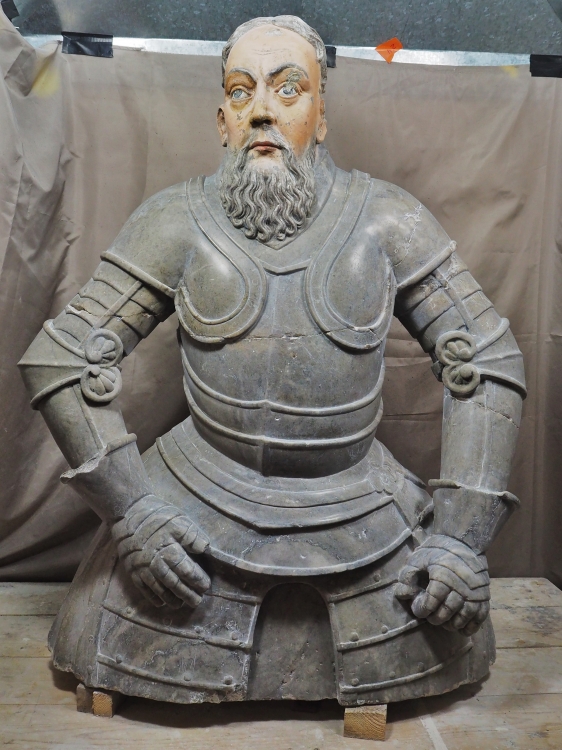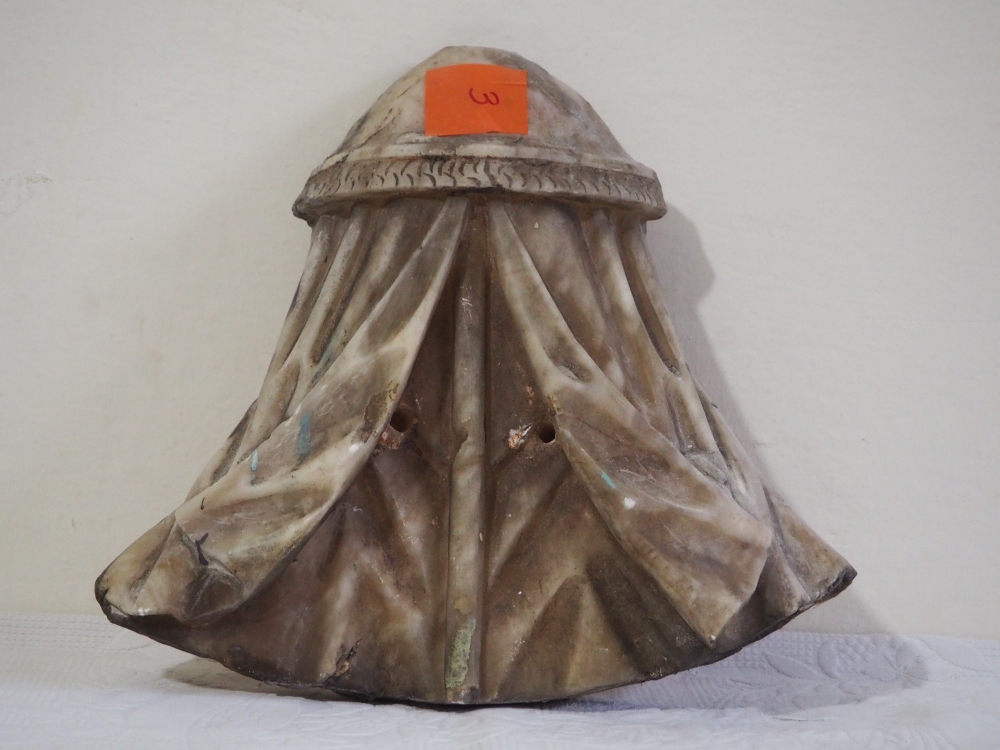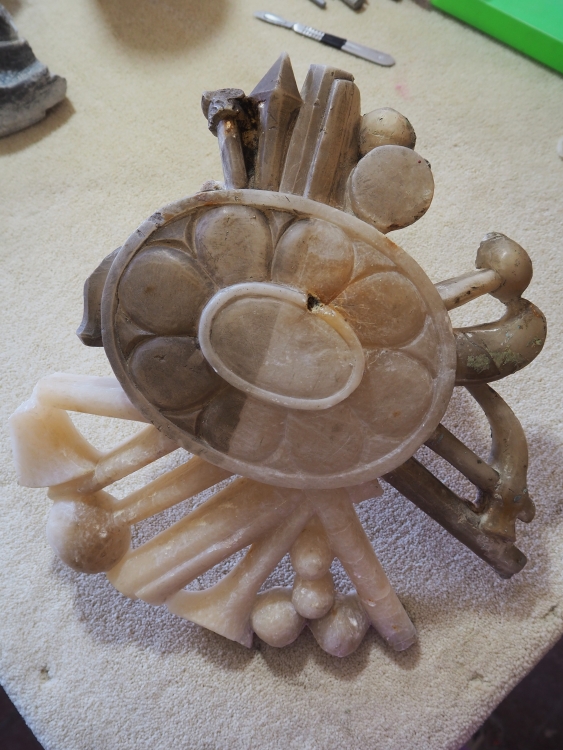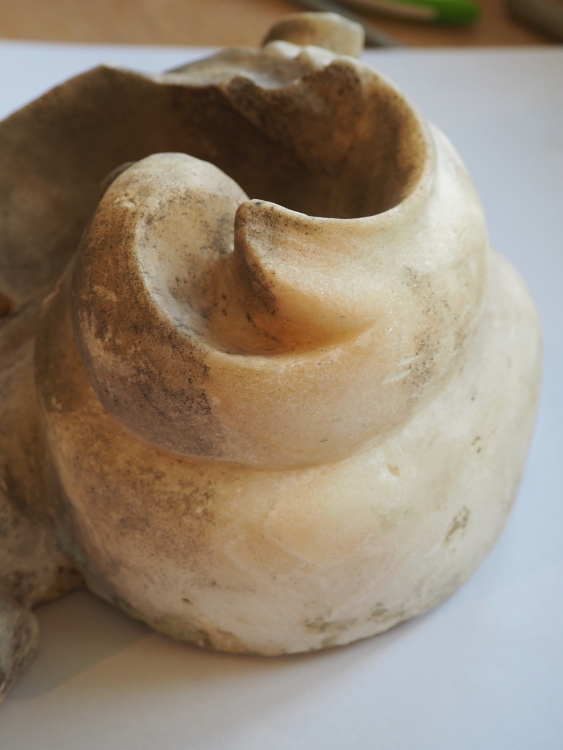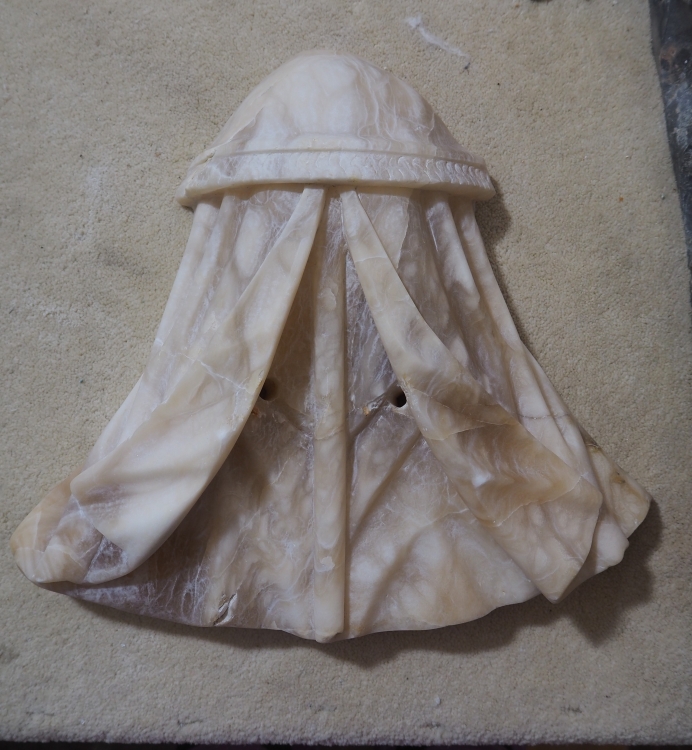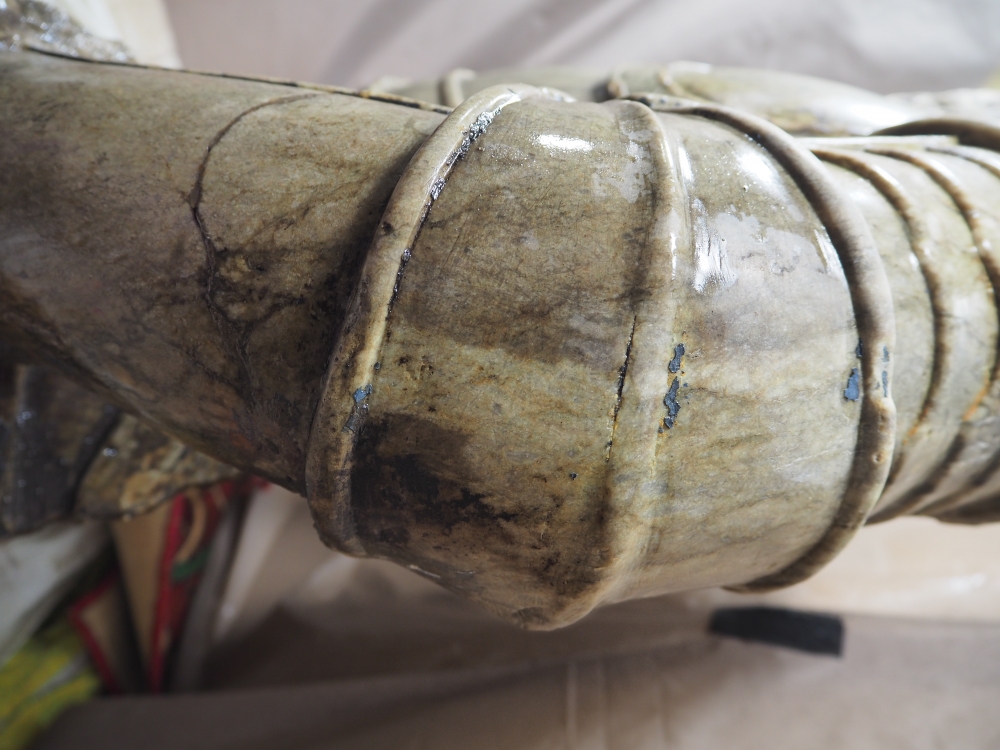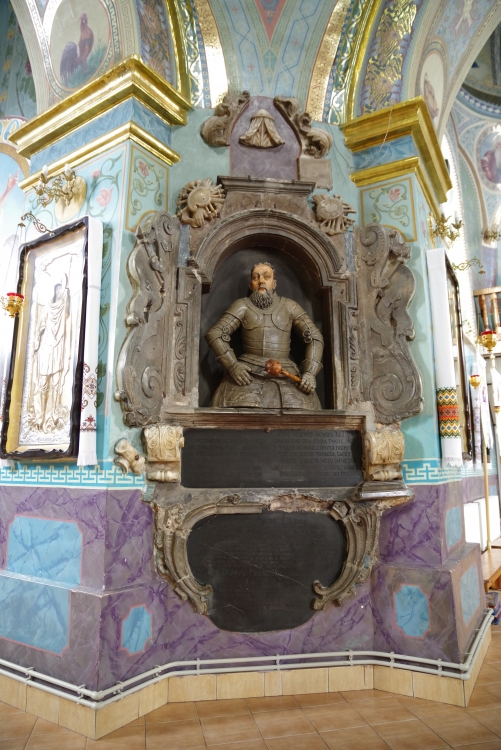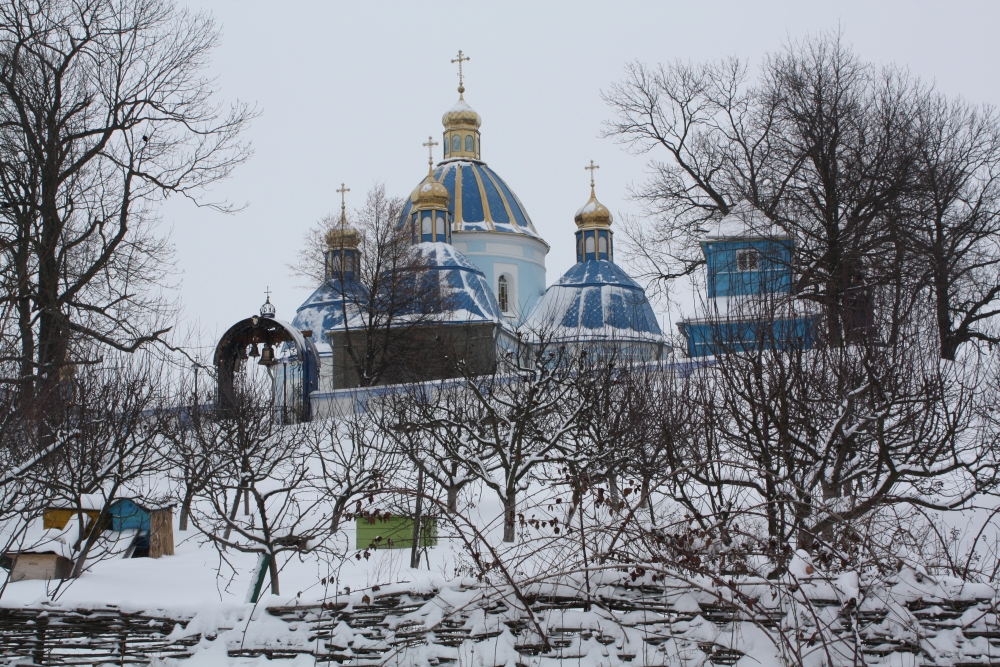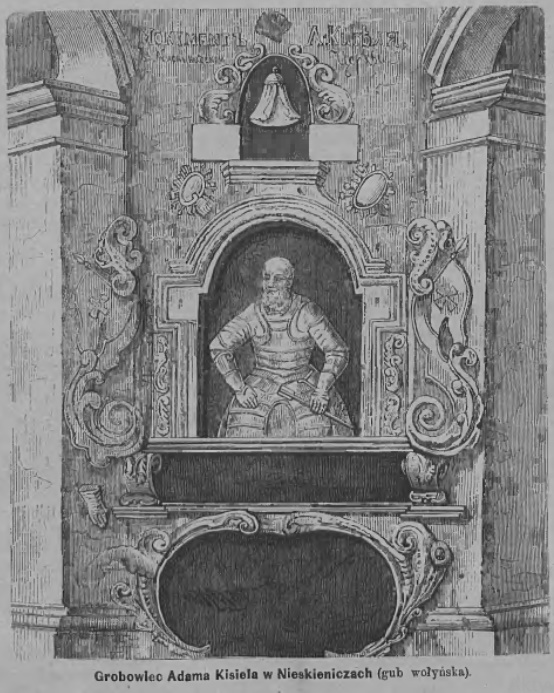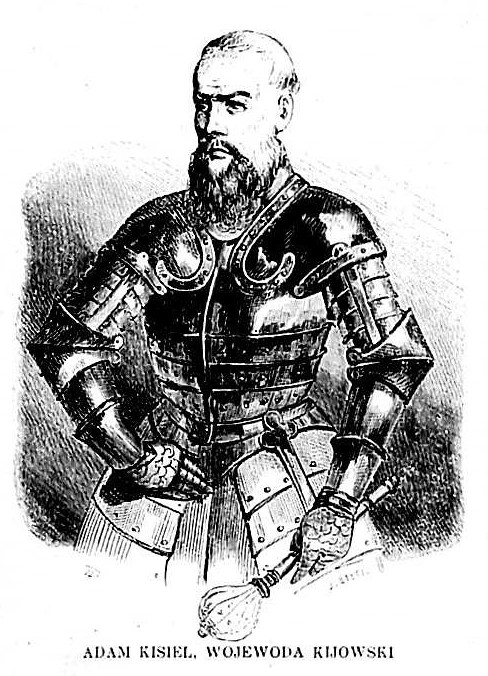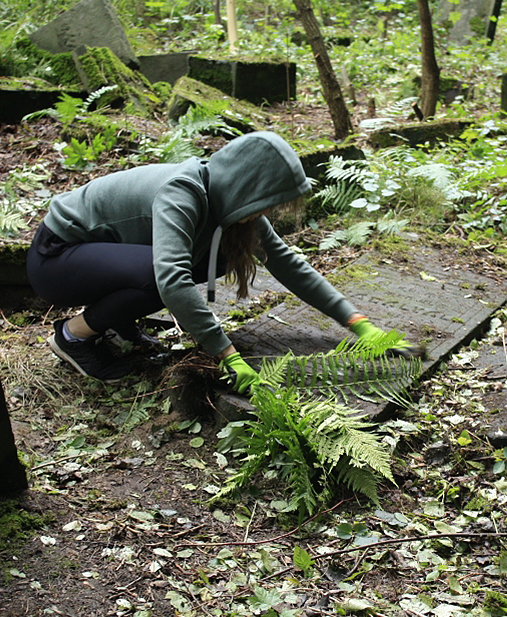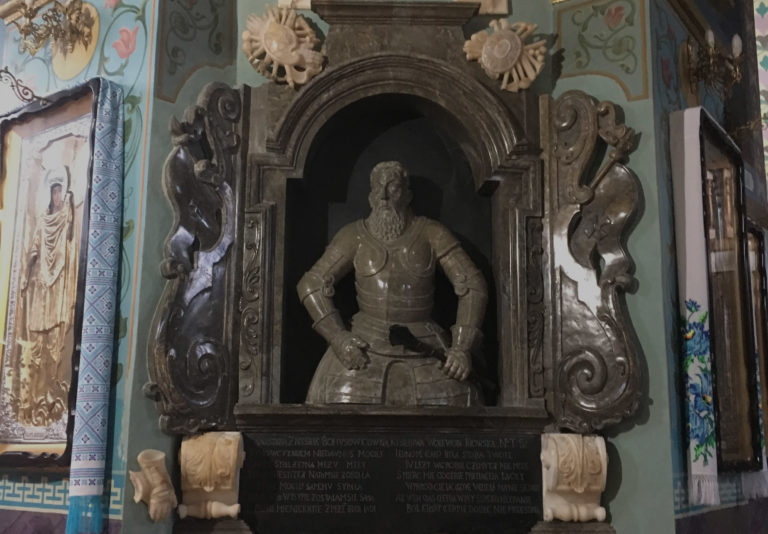o projekcie
Up on a hill in the old village of Nyzkynychi – currently a part of Novovolynsk established in 1950 – there’s an Orthodox monastery with the Orthodox Chruch of the Dormition of the Mother of God, founded by Adam Kisiel in around 1643.
The Orthodox church was built on a Greek cross plan. The chancel and the side annexes are set on closed semicircles, and the narthex is built on a square plan. The point where arms cross is covered with a dome supported with a tholobate and a pendentive, and the side annexes are topped with smaller domes. The spatial arrangement and the balanced proportions of the whole body of the building form a harmonious piece of architecture. The central plan of the church proves that its founder followed the example of mausoleum-churches appearing in the 1sthalf of the 17thcentury.
Inside the church, on the south-west pillar of the building’s central part, there’s a grave marker of Adam Kisiel, made of marble and alabaster. The building founder’s half-figure stands in an alcove surrounded with a marble frame. Below is a set of inscription plaques, and the whole is adorned with the Światołdycz-Kisiel coat of arms. Adam Kisiel is depicted wearing an armour. Originally, the half-figure held a mace in the left hand.
So who was Adamo de Brusilow Sventoldicio Kisiel, whose image has been immortalized with so much attention to detail in the Orthodox church in the village of Nyzkynychi? He lived in the period 1600-1653. He was educated in Zamojski Academy and took part in the battles of Cecora and of Chocim. In 1632 he became a royal secretary. In 1632 he was appointed the Greater Castellan of Chernihiv, in 1642 – the Greater Castellan of Kiev, in 1648 – the Voivode of Bratslav, and a year later – in 1649 – he became the Voivode of Kiev. During the Khmelnytsky Uprising, he was a supporter of reaching an agreement with Cossacks. He then took part in negotiations regarding the Treaty of Zboriv (1649) and the Treaty of Bila Tserkva (1651).
On account of the pitiful condition of the grave marker, the Cultural Heritage Foundation proceeded already in 2017 with general conservation-restoration works aimed at restoring the memorial to its original shape. It was estimated that the project would take about 2 years to complete.
The year 2018 saw the conservation-restoration works aimed at halting the process of degradation of the memorial and preserving the artistic value of the monument come to an end.
The said works were financed from the Ministry of Culture and National Heritage’s funds granted to the Cultural Heritage Foundation as part of the programme entitled “National Remembrance Sites Abroad”.
The year 2017 involved dealing with the most urgent matters: the major part of efforts concentrated on restoring the epitaph plaque, much was also done to deal with the chipped stonework and unsightly accumulations on the surface of the grave marker. It was also necessary to address the accumulation of moisture at the foot of the memorial.
The said works were financed from the Ministry of Culture and National Heritage’s funds granted to the Cultural Heritage Foundation as part of the programme entitled “National Remembrance Sites Abroad”.
